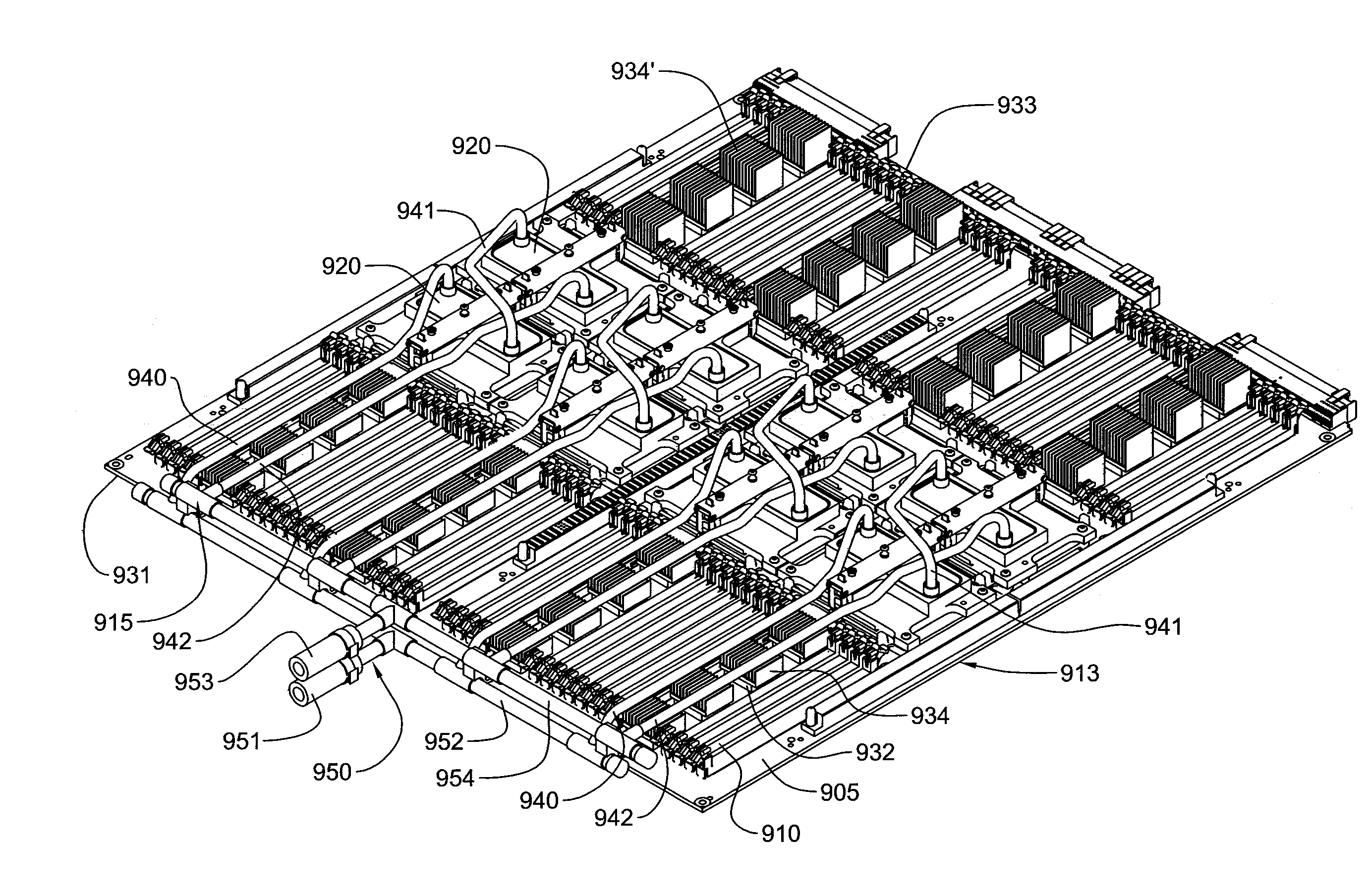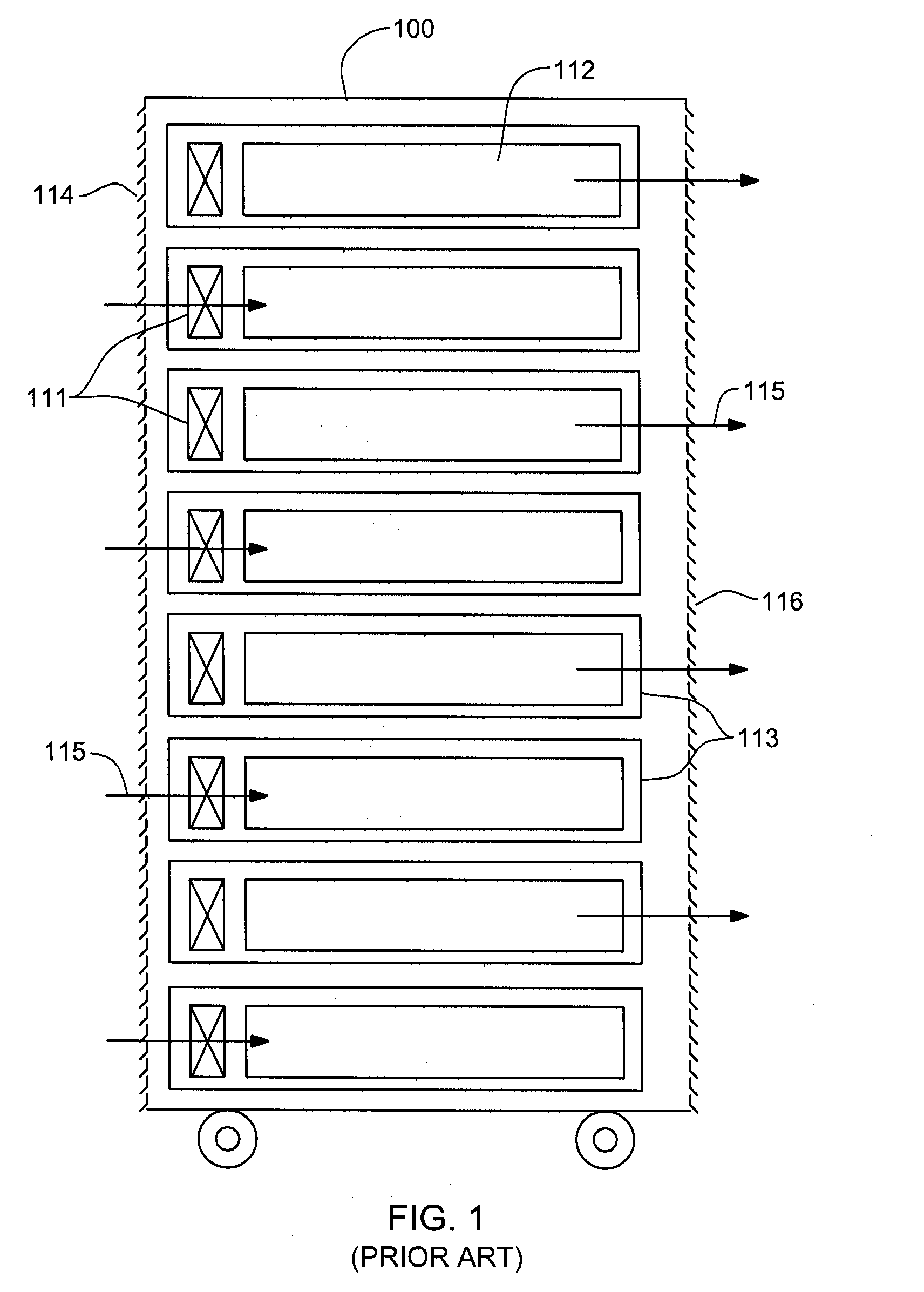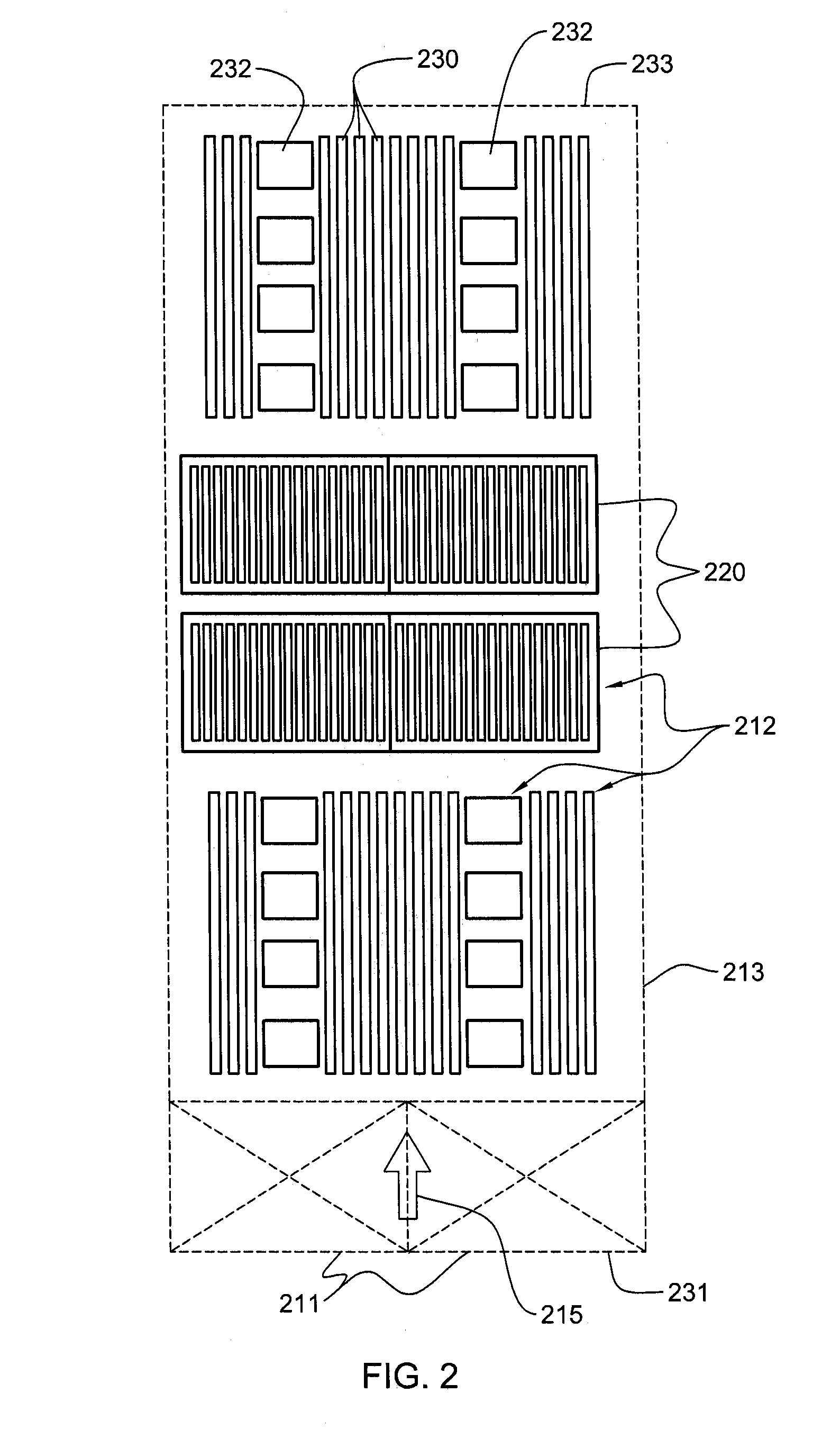Methods for configuring tubing for interconnecting in-series multiple liquid-cooled cold plates
a liquid-cooled cold plate and tubing technology, which is applied in the direction of fixed capacitor details, lighting and heating apparatus, instruments, etc., can solve the problems of unmanageable frame level approach, cooling challenge, and the inability of room air conditioning to effectively handle load, and achieve the effect of reducing the load and reducing the load
- Summary
- Abstract
- Description
- Claims
- Application Information
AI Technical Summary
Benefits of technology
Problems solved by technology
Method used
Image
Examples
Embodiment Construction
[0044]As used herein “electronics system” comprises any system containing one or more heat generating components of a computer system or other electronics unit requiring cooling. The terms “electronics rack”, “electronics frame”, and “frame” are used interchangeably, and include any housing, rack, compartment, blade chassis, etc., having heat generating components of a computer system or electronics system and may be for example, a stand-alone computer processor having high, mid or low end processing capability. In one embodiment, an electronics frame comprises multiple electronics drawers, each having multiple heat generating components disposed therein requiring cooling. “Electronics drawer” refers to any sub-housing, blade, book, drawer, node, compartment, etc., having multiple heat generating electronic components disposed therein. Each electronics drawer of an electronics frame may be movable or fixed relative to the electronics frame, with rack mounted electronics drawers and ...
PUM
 Login to View More
Login to View More Abstract
Description
Claims
Application Information
 Login to View More
Login to View More - R&D
- Intellectual Property
- Life Sciences
- Materials
- Tech Scout
- Unparalleled Data Quality
- Higher Quality Content
- 60% Fewer Hallucinations
Browse by: Latest US Patents, China's latest patents, Technical Efficacy Thesaurus, Application Domain, Technology Topic, Popular Technical Reports.
© 2025 PatSnap. All rights reserved.Legal|Privacy policy|Modern Slavery Act Transparency Statement|Sitemap|About US| Contact US: help@patsnap.com



